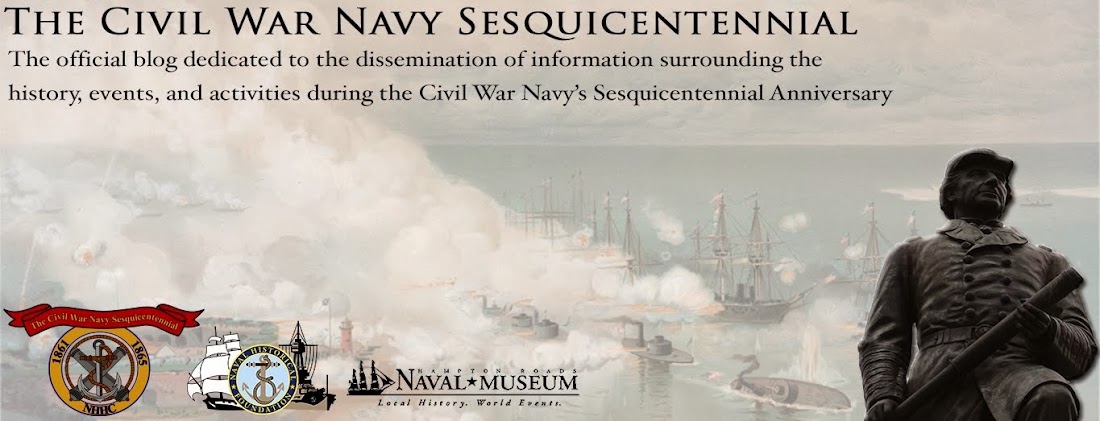Saturday, March 20, 2010
New Discussion Posted: What is your favorite book or film about the Civil War Navy?
Book worms and movie buffs unite! Let us know your favorite book or film on the American Civil War Navy! Post either here as a comment on the Civil War Navy 150 blogsite or in the Discussion section tab on our facebook page.
Confederate Marines Living History Weekend at Port Columbus

Several units of Confederate Marines will appear at Port Columbus this weekend for a special Cool History program called "Marines of the South." March 20-21 will feature training of these marines in various Civil War era tactics including crewing large naval guns, small arms drill and firing, and amphibious landings. Three big cannon firings per day are scheduled. The event is included in normal admission fees at Port Columbus.
For more information, go to: http://www.portcolumbus.org/ or http://portcolumbuslivinghistory.blogspot.com/2010/03/draft-schedule-for-march-cool-history.html
TENTATIVE SCHEDULE (subject to change):
DRAFT Schedule
Saturday
9 a.m. Raise flag on Water Witch
11a.m. Cool History Begins
Cannon Firing and Drill
11:30 0r s0 till 1 Small Arms, Drill and On-Ship Activities
1 p.m. Cannon Firing and Drill
1:30 CSMC Birthday Party on USS Water Witch (Weather Permitting)
2:30 River Activities - Landings etc.
4:00 Cannon Firing and Drill
Sunday
Morning Boat activities if desired
Noon Cannon Firing and Drill
Afternoon Daily Sailor Activities
Tuesday, March 9, 2010
Ten Books on the Battle of Hampton Roads
In honor of the 148th anniversary of the engagement between the USS Monitor and the CSS Virginia, here are ten books related to the Battle of Hampton Roads, specifically the duel between the two ironclads.

Campbell, R. Thomas and Alan B. Flanders. Confederate Phoenix: The CSS Virginia. Shippensburg, PA: Burd Street Press, 2001.
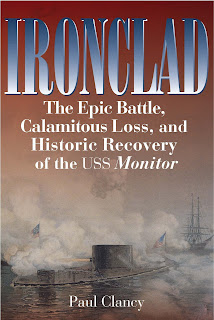
Clancy, Paul. Ironclad: The Epic Battle, Calamitous Loss, and Historic Recovery of the USS Monitor. Thomaston, ME: International Marine/Ragged Mountain Press, 2005.
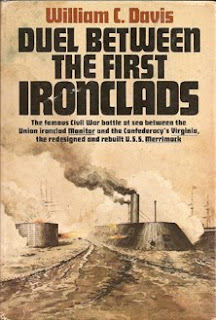
Davis, William C. Duel Between the First Ironclads. Baton Rouge: Louisiana State University Press, 1981.
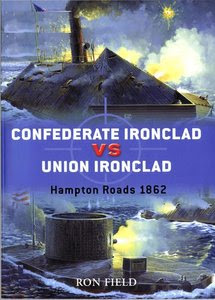
Field, Ron. Confederate Ironclad vs Union Ironclad: Hampton Roads 1862. Oxford, UK: Osprey Publishing, 2008.

Hoehling, A.A. Thunder at Hampton Roads. New York: Da Capo Press, 1993.
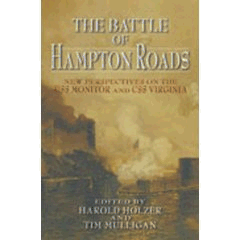
Holzer, Harold and Tim Mulligan, eds. The Battle of Hampton Roads: New Perspectives on the USS Monitor and CSS Virginia. New York: Fordham University Press, 2006.

Konstam, Angus. Hampton Roads 1862: Clash of the Ironclads. Oxford, UK: Osprey Publishing, 2004.
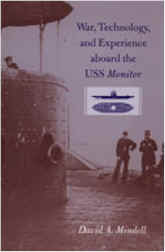
Mindell, David A. War, Technology, and Experience aboard the USS Monitor. Baltimore, MD: The Johns Hopkins University Press, 2000.

Quarstein, John V. C.S.S. Virginia: Mistress of Hampton Roads. H.E. Howard, 2000.

Symonds, Decision at Sea: Five Naval Battles that Shaped American History. New York: Oxford University Press, 2006.

Campbell, R. Thomas and Alan B. Flanders. Confederate Phoenix: The CSS Virginia. Shippensburg, PA: Burd Street Press, 2001.

Clancy, Paul. Ironclad: The Epic Battle, Calamitous Loss, and Historic Recovery of the USS Monitor. Thomaston, ME: International Marine/Ragged Mountain Press, 2005.

Davis, William C. Duel Between the First Ironclads. Baton Rouge: Louisiana State University Press, 1981.

Field, Ron. Confederate Ironclad vs Union Ironclad: Hampton Roads 1862. Oxford, UK: Osprey Publishing, 2008.

Hoehling, A.A. Thunder at Hampton Roads. New York: Da Capo Press, 1993.

Holzer, Harold and Tim Mulligan, eds. The Battle of Hampton Roads: New Perspectives on the USS Monitor and CSS Virginia. New York: Fordham University Press, 2006.

Konstam, Angus. Hampton Roads 1862: Clash of the Ironclads. Oxford, UK: Osprey Publishing, 2004.

Mindell, David A. War, Technology, and Experience aboard the USS Monitor. Baltimore, MD: The Johns Hopkins University Press, 2000.

Quarstein, John V. C.S.S. Virginia: Mistress of Hampton Roads. H.E. Howard, 2000.

Symonds, Decision at Sea: Five Naval Battles that Shaped American History. New York: Oxford University Press, 2006.
Monday, March 8, 2010
"Watching the Merrimack" by R.E. Colston

In March, 1862, I was in command of a Confederate brigade and of a district on the south side of the James River, embracing all the river forts and batteries down to the mouth of Nansemond River. My pickets were posted all along the shore opposite Newport News. From my headquarters at Smithfield I was in constant and rapid communication through relays of couriers and signal stations with my department commander, Major-General Huger, stationed at Norfolk.1
About 1 P. M. on the 8th of March, a courier dashed up to my headquarters with this brief dispatch: "The Virginia is coming up the river." Mounting at once, it took me but a very short time to gallop twelve miles down to Ragged Island. Newport News, exactly opposite, was an important Federal position completely commanding the entrance of the James. Powerful land batteries had been constructed, and a blockading squadron consisting of the United States frigates the Cumberland and the Congress (both sailing-vessels) had been stationed there for many months.
I had hardly dismounted at the water's edge when I descried the Merrimac approaching. The Congress was moored about a hundred yards below the land batteries, and the Cumberland a little above them. As soon as the Merrimac came within range, the batteries and war-vessels opened fire. She passed on up, exchanging broadsides with the Congress, and making straight for the Cumberland, at which she made a dash, firing her bow-guns as shed struck the doomed vessel with her prow. I could hardly believe my senses when I saw the masts of the Cumberland begin to sway wildly. After one or two lurches, her hull disappeared beneath the water, guns firing to the last moment. Most of her brave crew went down with their ship, but not with their colors, for the Union flag still floated defiantly from the masts, which projected obliquely for about half their length above the water after the vessel had settled unevenly upon the river-bottom. This first act of the drama was over in about thirty minutes, but it seemed to me only a moment.
The commander of the Congress recognized at once the impossibility of resisting the assault of the ram which had just sunk the Cumberland. With commendable promptness and presence of mind, he slipped the cables, and ran her aground upon the shallows, where the Merrimac, at that time drawing twenty-three feet of water, was unable to approach her, and could attack her with artillery alone. But, although the Congress had more guns than the Merrimac, and was also supported by the land batteries, it was an unequal conflict, for the projectiles hurled at the Merrimac glanced harmlessly from her iron-covered roof, while her rifled guns raked the Congress from end to end with terrific effect.
A curious incident must be noted here. Great numbers of people from the neighborhood of Ragged Island, as well as soldiers from the nearest posts, had rushed to the shore to behold the spectacle. The cannonade was visibly raging with redoubled intensity; but, to our amazement, not a sound was heard by us from the commencement of the battle. A strong March wind was blowing direct from us toward Newport News. We could see every flash of the guns and the clouds of white smoke arising after each discharge, but not a single report was audible. The effect was unspeakably strange. It seemed a picture of a battle rather than the reality. This flashing and moving but silent panorama continued to fascinate our gaze until near sunset, when the wind suddenly falling, the roar of the cannonade burst upon us in thundering majesty.
The Merrimac, taking no notice of the land batteries, concentrated her fire upon the ill-fated Congress. The latter replied gallantly until her commander, Joseph B. Smith, was killed and her decks were reeking with slaughter. Then her colors were hauled down and white flags appeared at the gaff and mainmast. Meanwhile, the James River gun-boat flotilla had joined the Merrimac after the sinking of the Cumberland. The Beaufort ran alongside, carrying her commander, Lieutenant Parker, who received the flag of the Congress and the swords of Commander William Smith and Lieutenant Pendergrast. These two officers were taken on board of the Beaufort, but at their own request were allowed to return to the Congress to aid in the transfer of their wounded to the Beaufort. But the land batteries kept up such a terrible fire from heavy guns and small arms, that the boats were driven back with loss, Lieutenant Minor, of the Merrimac, among others, being wounded in one of the boas of that vessel. Through my field-glass I could see the crew of the Congress making their escape to the shore over the bow. Unable to secure her prize, the Merrimac set her on fire with hot shot, and turned to face new adversaries just appearing upon the scene of conflict.
As soon as it was known at Fortress Monroe that the Merrimac had come out, the frigates Minnesota, Roanoke, and St. Lawrence were ordered to the assistance of the blockading squadron. The first was one of the most powerful of her class, mounting forty guns. The Roanoke was also a large steam-frigate, and the St. Lawrence was a sailing-vessel. The Minnesota, assisted by two tugs, was the first to reach the scene, but the Cumberland and the Congress were already past helping. As soon as she came within range, a rapid cannonade commenced between her and the Merrimac, aided by the Patrick Henry and the Jamestown, side-wheeled river steamers transformed into gun-boats. The Minnesota, drawing nearly as much water as the Merrimac, grounded upon a shoal in the North Channel. This at once put an end to any further attacks by ramming; but the lofty frigate, towering above the water, now offered an easy target to the rifled guns of the Merrimac and the lighter artillery of the gun-boats. The Merrimac narrowly escaped getting aground herself, and had to keep at a considerable distance, but she and the gun-boats could choose their position, and they raked their motionless antagonist from stem to stern, inflicting great damage and slaughter. She replied, undaunted, with her formidable artillery, and the gun-boats were soon driven back; a shot exploded the Patrick Henry's boiler, causing much loss of life and disabling that vessel for a considerable time.
In the mean time the Roanoke and St. Lawrence were approaching, aided by steam-tugs. As they passed Sewell's Point, its batteries opened fire upon them, and they replied with broadsides. Just at that moment the scene was one of unsurpassed magnificence. The bright afternoon sun shone upon the glancing waters. The fortifications of Newport News were seen swarming with soldiers, now idle spectators of a conflict far beyond the range of their batteries, and the flames were just bursting from the abandoned Congress. The stranded Minnesota seemed a huge monster at bay, surrounded by the Merrimac and the gun-boats. The entire horizon was lighted up by the continual flashes of the artillery of these combatants, the broadsides of the Roanoke and St. Lawrence and the Sewell's Point batteries; clouds of white smoke rose in spiral columns to the skies, illumined by the evening sunlight, while land and water seemed to tremble under the thunders of the incessant cannonade.
The Minnesota was now in a desperate situation. It is true that, being aground, she could not sink, but, looking through the glass, I could see a hole in her side, made by the Merrimac's rifle shells. She had lost many men, and had once been set on fire. Her destruction or surrender seemed inevitable, since all efforts to get her afloat had failed. But just then the Merrimac turned away from her toward the Roanoke and the St. Lawrence. These vessels had suffered but little from the distant fire of the Sewell's point batteries, but both had run aground, and had not been floated off again without great difficulty, for it was very hazardous for vessels of deep draught to manoeuvre over these comparatively shallow waters. When the Merrimac approached, they delivered broadsides, and were then towed back with promptness. The Merrimac pursued them but a short distance (for by this time darkness was falling upon the scene of action, the tide was ebbing, and there was great risk of running aground), and then steamed toward Norfolk with the Beaufort, leaving her wounded at the Marine Hospital. Among these was her brave commander, Admiral Franklin Buchanan, who had handled her that day with unsurpassed skill and courage. The command now devolved upon Lieutenant Catesby Jones, who the next day proved himself a most able and gallant successor.
And now followed one of the grandest episodes of this splendid yet somber drama. Night had come, mild and calm, refulgent with all the beauty of Southern skies in early spring. The moon in her second quarter was just rising over the rippling waters, but her silvery light was soon paled by the conflagration of the Congress, whose lurid glare was reflected in the river. The burning frigate four miles away seemed much nearer. As the flames crept up the rigging, every mast , spar, and rope, glittered against the dark sky in dazzling lines of fire. The hull, aground upon the shoal, was plainly visible, and upon its black surface each port-hole seemed the mouth of a fiery furnace. For hours the flames raged, with hardly a perceptible change in the wondrous picture. At irregular intervals, loaded guns and shells, exploding as the fire reached them, sent forth their deep reverberations, reechoed over and over from every headland of the bay. The masts and rigging were still standing, apparently almost intact, when, about two o'clock in the morning, a monstrous sheaf of flame rose from the vessel to am immense height. The sky was rent in twain by the tremendous flash. Blazing fragments seemed to fill the air, and after a long interval, a deep, deafening report announced the explosion of the ship's powder-magazine. When the blinding glare had subsided, I supposed every vestige of the vessel would have disappeared, but apparently all the force of the explosion had been upward. The rigging had vanished entirely, but the hull seemed hardly shattered; the only apparent change in it was that in two places two or three of the port-holes had been blown into one great gap. It continued to burn until the brightness of its blaze was effaced by the morning sun.
During the night I had sent an order to bring down from Smithfield to Ragged Island the twelve-oared barge that I used when inspecting the river batteries, and at the first dawn of day I embarked with some of my staff, and rowed in the direction of the Minnesota, confident of witnessing her destruction or surrender; and, in fact, nothing could have saved her but the timely arrival of the anxiously expected Monitor.
The sun was just rising when the Merrimac, having anchored for the night at Sewall's Point, headed toward the Minnesota. But a most important incident had taken place during the night. The Monitor had reached Old Point about ten o'clock; her commander had been informed of the events of the day, and ordered to proceed at once to the relief of the Minnesota. His comparatively small vessel, scarcely distinguishable at night from an ordinary tugboat, made her way unperceived while all attention was concentrated upon the conflagration of the Congress, and she anchored alongside of the Minnesota about two o'clock in the morning.
As soon as the Merrimac approached her old adversary, the Monitor darted out from behind the Minnesota, whose immense bulk had effectually concealed her from view. No words can express the surprise with which we beheld this strange craft, whose appearance was tersely and graphically described by the exclamation of one of my oarsmen, "A tin can on a shingle!" Yet this insignificant looking object was at that moment the most powerful war-ship in the world. The first shots of the Merrimac were directed at the Minnesota, which was again set on fire, while one of the tugs alongside of her was blown up, creating great havoc and consternation; but the Monitor, having the advantage of light draught, placed herself between the Merrimac and her intended victim, and from that moment the conflict became a heroic single combat between the two iron-clads. For an instant they seemed to pause, as if to survey each other. Then advancing cautiously, the two vessels opened fire as soon as they came within range, and a fierce artillery duel raged between them, without perceptible effect, although the entire fight was within close range, from half a mile at the farthest down to a few yards. For four hours, from eight to twelve (which seemed three times as long), the cannonading continued with hardly a moment's intermission. I was now within three-quarters of a mile of them, and more than once spray shots came near enough to dash the spray over my barge, but the grandeur of the spectacle was so fascinating that they passed by unheeded. Like gladiators in the arena, the antagonists would repeatedly rush at each other, retreat, double, and close in again. During these evolutions, in which the Monitor had the advantage if a light draught, the Merrimac ran aground. After much delay and difficulty she was floated off. Finding that her shot made no impression whatever upon the Monitor, the Merrimac, seizing a favorable chance, succeeded in striking her foe with her stem. Soon afterward they ceased firing and separated as if by common consent. The Monitor steamed away toward Old Point. Captain Van Brunt, commander of the Minnesota states in his official report that when he saw the Monitor disappear, he lost all hope of saving his ship. But, fortunately for him, the Merrimac steamed slowly toward Norfolk, evidently disabled in her motive power. The Monitor, accompanied by several tugs, returned late in the afternoon, and they succeeded in floating off the Minnesota and conveying her to Old Point.
During the battle the Merrimac had lost two killed and nineteen wounded. Her starboard anchor, all her boats, her smoke-stack, and the muzzles of two of her guns were shot away; but the important fact was established that the guns then in use had proved unable to inflict any injury upon the Monitor, and that even the improvised armor of the Merrimac had suffered no very important damage from the superior guns of the Monitor.
R. E. Colston
[source: Transcribed from The Century Illustrated Monthly Magazine, November 1864 to April 1885, The Century Co., New York, F. Warne & Co., London, Vol. XXIX, New Series Vol. VII. pp 763-766.]
Friday, March 5, 2010
Battle of Hampton Roads Weekend at the Mariner's Museum
From the Mariner's Museum Website:
Join The Mariners’ Museum and NOAA’s Monitor National Marine Sanctuary in observance of the 148th anniversary of the Battle of Hampton Roads, the backdrop of the famous clash between the ironclads USS Monitor and CSS Virginia. NOAA and Mariners’ staff will give informative lectures about the revolutionary vessels and how they changed the world’s navies.
Cost will be free with museum admission.
Link: http://mariner.org/calendar/family-event/battle-hampton-roads-weekend
The Mariner's Museum is also hosting a Living History day today, March 5th, for families, homeschoolers, and other groups.
Join The Mariners’ Museum and NOAA’s Monitor National Marine Sanctuary in observance of the 148th anniversary of the Battle of Hampton Roads, the backdrop of the famous clash between the ironclads USS Monitor and CSS Virginia. NOAA and Mariners’ staff will give informative lectures about the revolutionary vessels and how they changed the world’s navies.
Cost will be free with museum admission.
Link: http://mariner.org/calendar/family-event/battle-hampton-roads-weekend
The Mariner's Museum is also hosting a Living History day today, March 5th, for families, homeschoolers, and other groups.
Subscribe to:
Posts (Atom)
